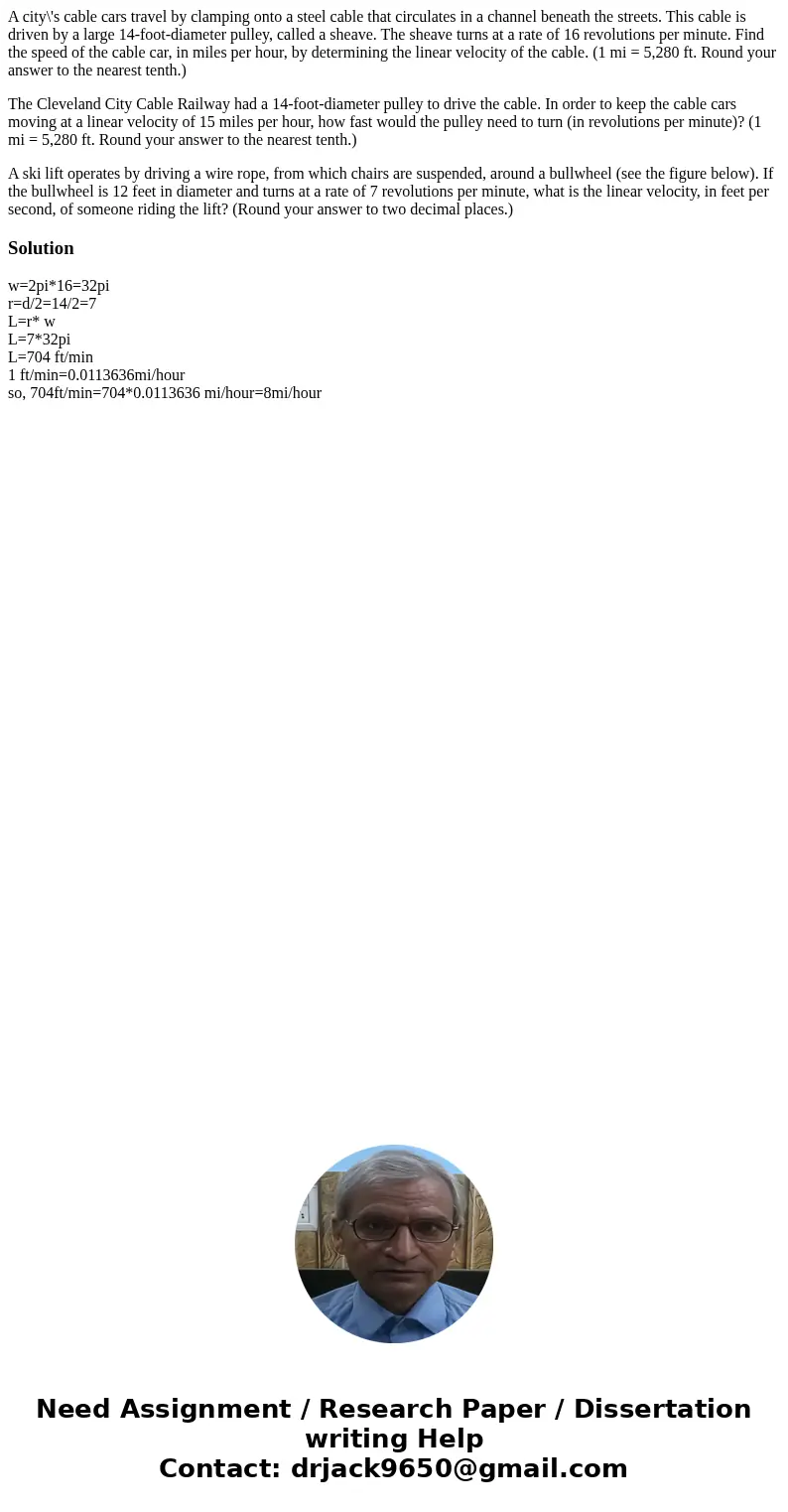A citys cable cars travel by clamping onto a steel cable tha
A city\'s cable cars travel by clamping onto a steel cable that circulates in a channel beneath the streets. This cable is driven by a large 14-foot-diameter pulley, called a sheave. The sheave turns at a rate of 16 revolutions per minute. Find the speed of the cable car, in miles per hour, by determining the linear velocity of the cable. (1 mi = 5,280 ft. Round your answer to the nearest tenth.)
The Cleveland City Cable Railway had a 14-foot-diameter pulley to drive the cable. In order to keep the cable cars moving at a linear velocity of 15 miles per hour, how fast would the pulley need to turn (in revolutions per minute)? (1 mi = 5,280 ft. Round your answer to the nearest tenth.)
A ski lift operates by driving a wire rope, from which chairs are suspended, around a bullwheel (see the figure below). If the bullwheel is 12 feet in diameter and turns at a rate of 7 revolutions per minute, what is the linear velocity, in feet per second, of someone riding the lift? (Round your answer to two decimal places.)
Solution
w=2pi*16=32pi
r=d/2=14/2=7
L=r* w
L=7*32pi
L=704 ft/min
1 ft/min=0.0113636mi/hour
so, 704ft/min=704*0.0113636 mi/hour=8mi/hour

 Homework Sourse
Homework Sourse